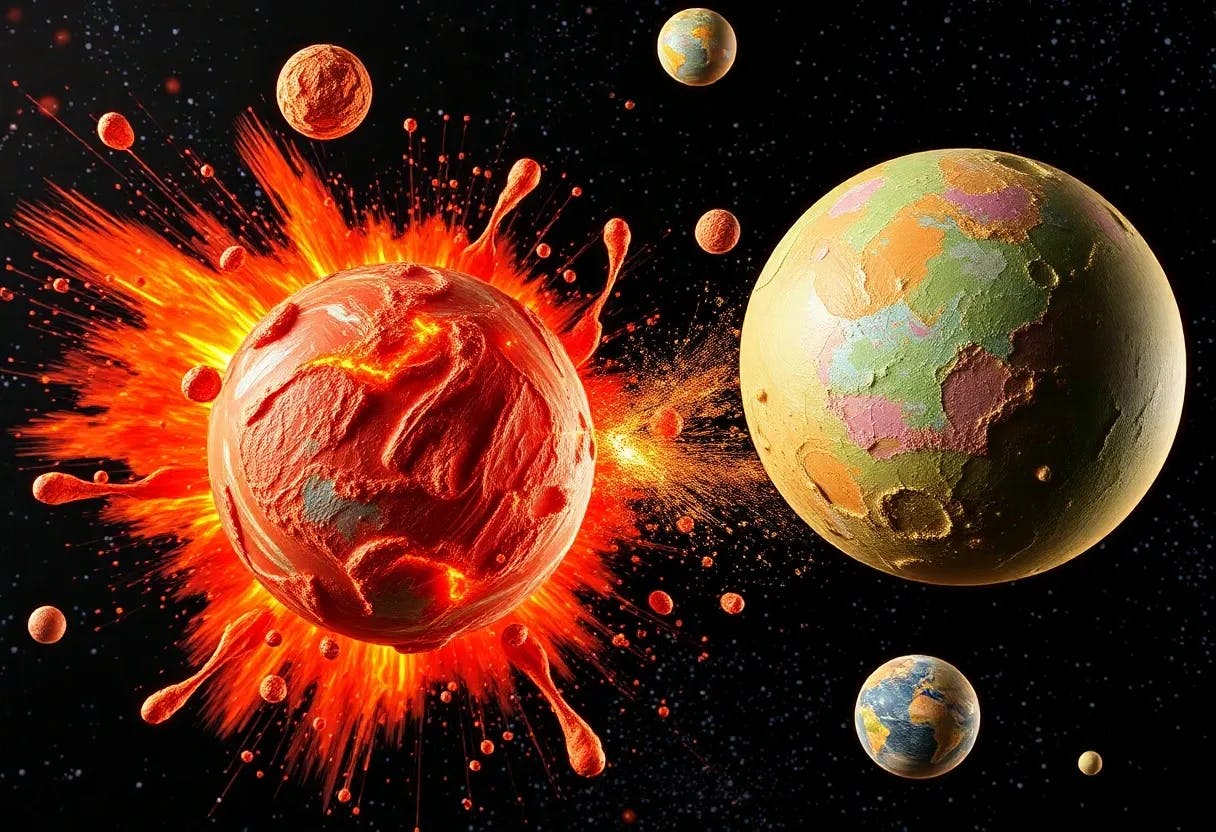Table of Links
2 Muons vs. Protons
3 Muon Colliders Are Gauge Boson Colliders
3.1 From the effective vector approximation to PDFs
3.2 PDFs with broken electroweak symmetry
4 Physics
4.1 Electroweak symmetry breaking
5 Complementarity
6 Summary and Future Directions
2 Muons vs. Protons
High-energy muon colliders enjoy a host of advantages relative to their proton-proton counterparts, owing in part to the coexistence of scattering processes carrying nearly all of the collider energy (muon annihilation) with those carrying a smaller fraction (vector boson fusion). Before studying the physics potential of muon colliders in specific scenarios, we begin with a general exploration of the properties of muon annihilation and vector boson fusion, with an eye towards the comparison with proton-proton colliders.
2.1 Muon annihilation
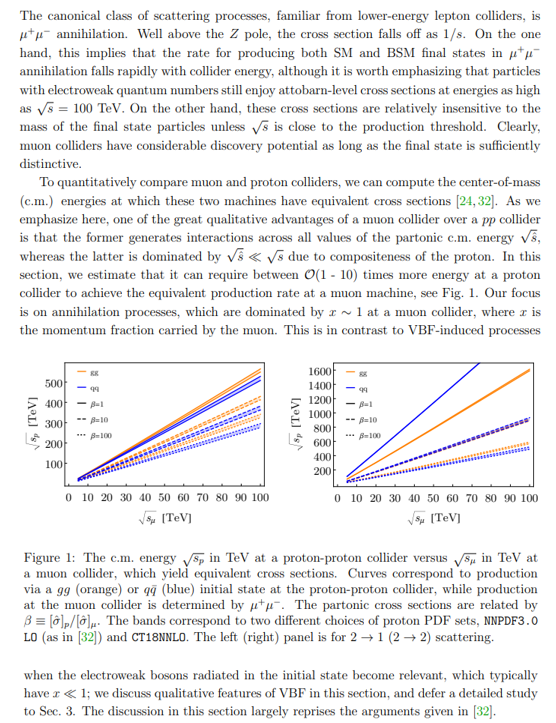
To make a concrete comparison, we work in terms of generalized parton luminosities. We assume that the inclusive cross section for the final state F (with unspecified remnants X) arising from collisions of (possibly composite) particles A and B takes the form
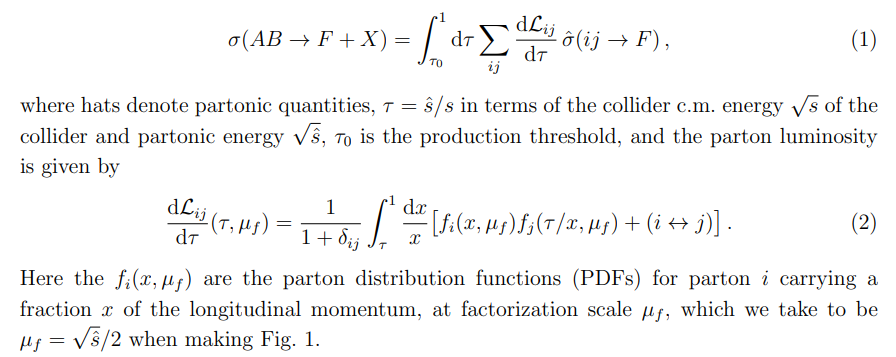
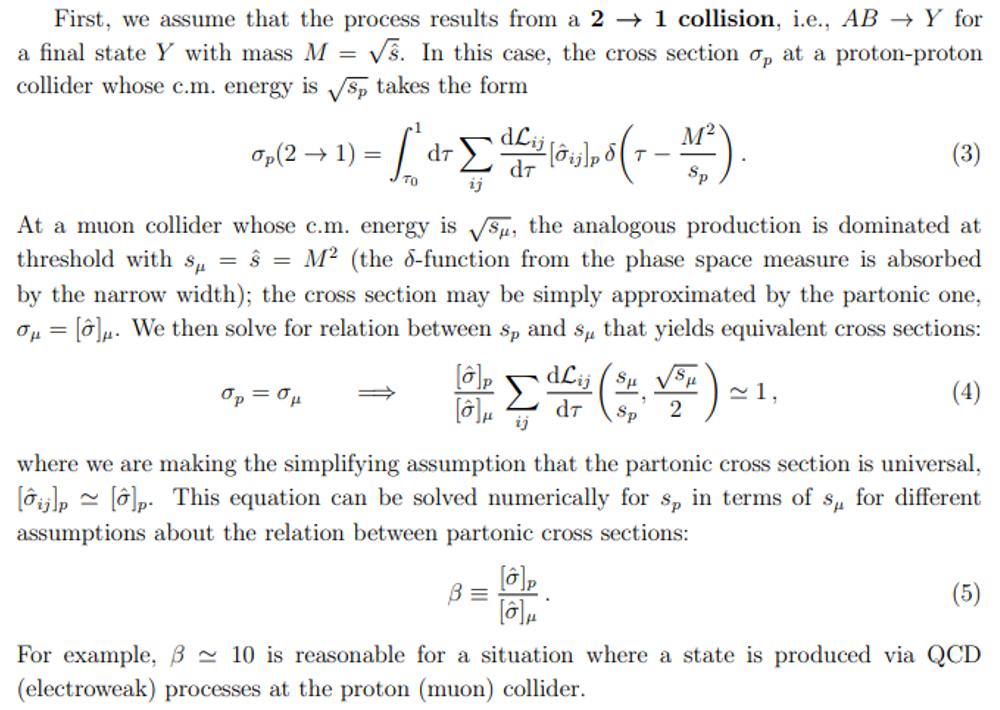
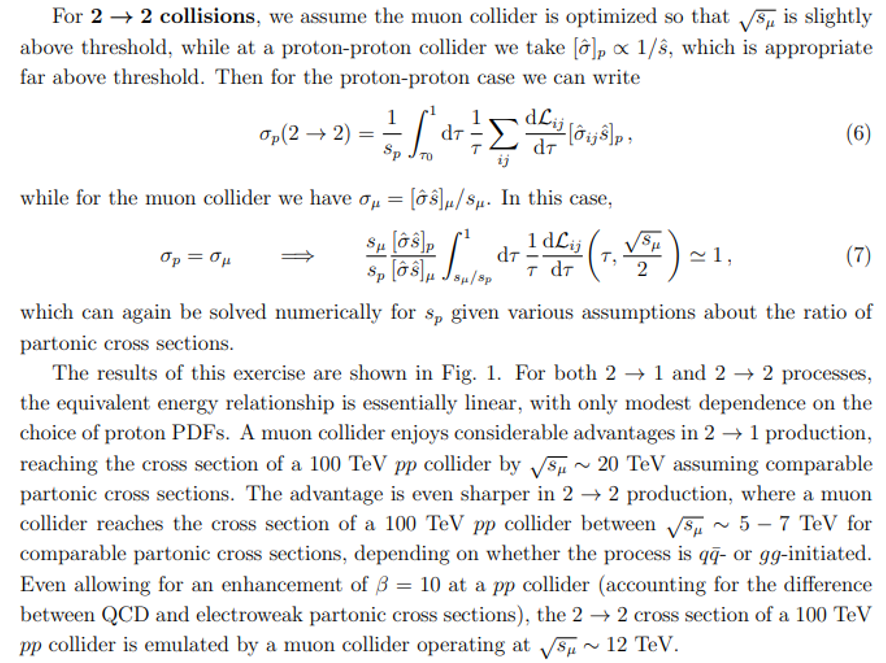
Of course, this comparison is necessarily favorable to muon colliders in the sense that it assumes the mass scale of new physics lies just below the c.m. energy of the collider, although radiative return can salvage some of the same conclusions at the cost of further suppressing the partonic cross section. Developing a comprehensive case for muon colliders still requires investigating production cross sections for a variety of new physics scenarios across a range of c.m. energies that go well above the production threshold. That is the motivation for the model dependent studies provided in Secs. 4 and 5 below.
Authors:
(1) Hind Al Ali, Department of Physics, University of California, Santa Barbara, CA 93106, USA;
(2) Nima Arkani-Hamed, School of Natural Sciences, Institute for Advanced Study, Princeton, NJ, 08540, USA;
(3) Ian Banta, Department of Physics, University of California, Santa Barbara, CA 93106, USA;
(4) Sean Benevedes, Department of Physics, University of California, Santa Barbara, CA 93106, USA;
(5) Dario Buttazzo, INFN, Sezione di Pisa, Largo Bruno Pontecorvo 3, I-56127 Pisa, Italy;
(6) Tianji Cai, Department of Physics, University of California, Santa Barbara, CA 93106, USA;
(7) Junyi Cheng, Department of Physics, University of California, Santa Barbara, CA 93106, USA;
(8) Timothy Cohen, Institute for Fundamental Science, University of Oregon, Eugene, OR 97403, USA;
(9) Nathaniel Craig, Department of Physics, University of California, Santa Barbara, CA 93106, USA;
(10) Majid Ekhterachian, Maryland Center for Fundamental Physics, University of Maryland, College Park, MD 20742, USA;
(11) JiJi Fan, Department of Physics, Brown University, Providence, RI 02912, USA;
(12) Matthew Forslund, C. N. Yang Institute for Theoretical Physics, Stony Brook University, Stony Brook, NY 11794, USA;
(13) Isabel Garcia Garcia, Kavli Institute for Theoretical Physics, University of California, Santa Barbara, CA 93106, USA;
(14) Samuel Homiller, Department of Physics, Harvard University, Cambridge, MA 02138, USA;
(15) Seth Koren, Department of Physics and Enrico Fermi Institute, University of Chicago, Chicago, IL 60637, USA;
(16) Giacomo Koszegi, Department of Physics, University of California, Santa Barbara, CA 93106, USA;
(17) Zhen Liu, Maryland Center for Fundamental Physics, University of Maryland, College Park, MD 20742, USA and School of Physics and Astronomy, University of Minnesota, Minneapolis, MN 55455, USA;
(18) Qianshu Lu, Department of Physics, Harvard University, Cambridge, MA 02138, USA;
(19) Kun-Feng Lyu, Department of Physics, The Hong Kong University of Science and Technology, Clear Water Bay, Kowloon, Hong Kong S.A.R., P.R.C;
(20) Alberto Mariotti, Theoretische Natuurkunde and IIHE/ELEM, Vrije Universiteit Brussel, and International Solvay Institutes, Pleinlaan 2, B-1050 Brussels, Belgium;
(21) Amara McCune, Department of Physics, University of California, Santa Barbara, CA 93106, USA;
(22) Patrick Meade, C. N. Yang Institute for Theoretical Physics, Stony Brook University, Stony Brook, NY 11794, USA;
(23) Isobel Ojalvo, Princeton University, Princeton, NJ 08540, USA;
(24) Umut Oktem, Department of Physics, University of California, Santa Barbara, CA 93106, USA;
(25) Diego Redigolo, CERN, Theoretical Physics Department, Geneva, Switzerland and INFN Sezione di Firenze, Via G. Sansone 1, I-50019 Sesto Fiorentino, Italy;
(26) Matthew Reece, Department of Physics, Harvard University, Cambridge, MA 02138, USA;
(27) Filippo Sala, LPTHE, CNRS & Sorbonne Universite, 4 Place Jussieu, F-75252 Paris, France
(28) Raman Sundrum, Maryland Center for Fundamental Physics, University of Maryland, College Park, MD 20742, USA;
(29) Dave Sutherland, INFN Sezione di Trieste, via Bonomea 265, 34136 Trieste, Italy;
(30) Andrea Tesi, INFN Sezione di Firenze, Via G. Sansone 1, I-50019 Sesto Fiorentino, Italy and Department of Physics and Astronomy, University of Florence, Italy;
(31) Timothy Trott, Department of Physics, University of California, Santa Barbara, CA 93106, USA;
(32) Chris Tully, Princeton University, Princeton, NJ 08540, USA;
(33) Lian-Tao Wang, Department of Physics and Enrico Fermi Institute, University of Chicago, Chicago, IL 60637, USA;
(34) Menghang Wang, Department of Physics, University of California, Santa Barbara, CA 93106, USA.
This paper is

